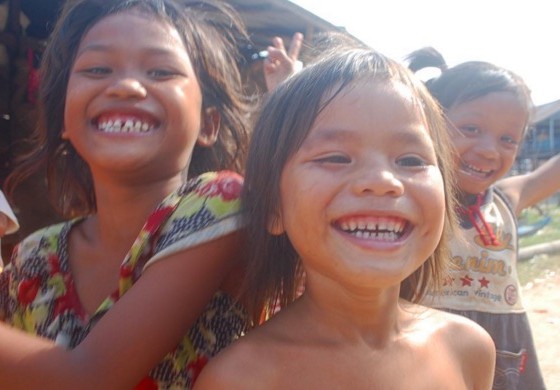THERE I WAS IN SIEM REAP’S main tourist hot spot, where you can get a $3 massage in the same room where you can get a $10 happy ending. There was a Cambodian boy on Pub Street gesturing at a dirty-faced woman holding a baby. She was a statue in the milling throng. “Please, I don’t want money. I just want milk for the baby,” he said.
The woman watched our interaction intently as the boy moved closer to me. “I don’t want money. I only want milk,” he repeated.
